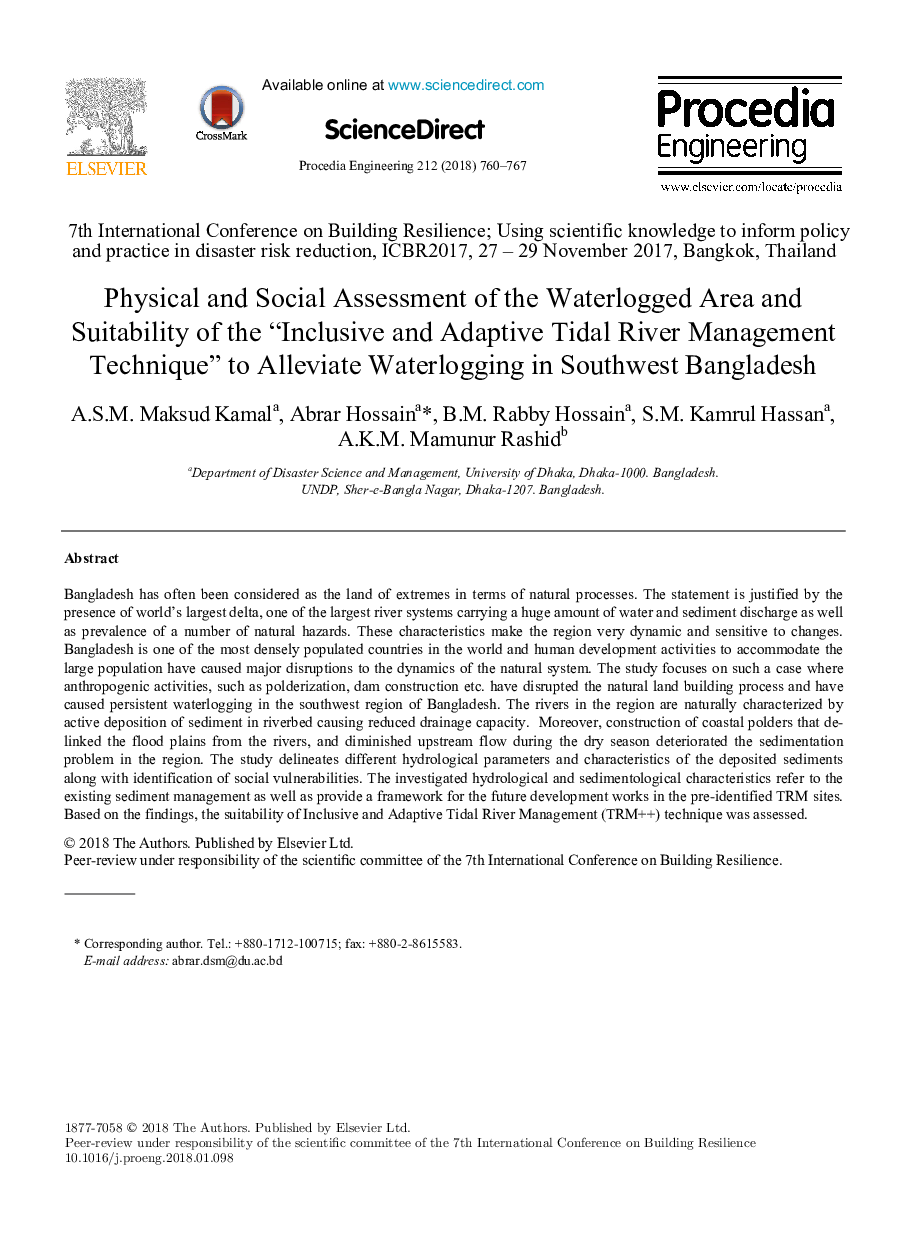| Article ID | Journal | Published Year | Pages | File Type |
|---|---|---|---|---|
| 7226155 | Procedia Engineering | 2018 | 8 Pages |
Abstract
Bangladesh has often been considered as the land of extremes in terms of natural processes. The statement is justified by the presence of world's largest delta, one of the largest river systems carrying a huge amount of water and sediment discharge as well as prevalence of a number of natural hazards. These characteristics make the region very dynamic and sensitive to changes. Bangladesh is one of the most densely populated countries in the world and human development activities to accommodate the large population have caused major disruptions to the dynamics of the natural system. The study focuses on such a case where anthropogenic activities, such as polderization, dam construction etc. have disrupted the natural land building process and have caused persistent waterlogging in the southwest region of Bangladesh. The rivers in the region are naturally characterized by active deposition of sediment in riverbed causing reduced drainage capacity. Moreover, construction of coastal polders that de-linked the flood plains from the rivers, and diminished upstream flow during the dry season deteriorated the sedimentation problem in the region. The study delineates different hydrological parameters and characteristics of the deposited sediments along with identification of social vulnerabilities. The investigated hydrological and sedimentological characteristics refer to the existing sediment management as well as provide a framework for the future development works in the pre-identified TRM sites. Based on the findings, the suitability of Inclusive and Adaptive Tidal River Management (TRM++) technique was assessed.
Keywords
Related Topics
Physical Sciences and Engineering
Engineering
Engineering (General)
Authors
A.S.M. Maksud Kamal, Abrar Hossain, B.M. Rabby Hossain, S.M. Kamrul Hassan, A.K.M. Mamunur Rashid,
